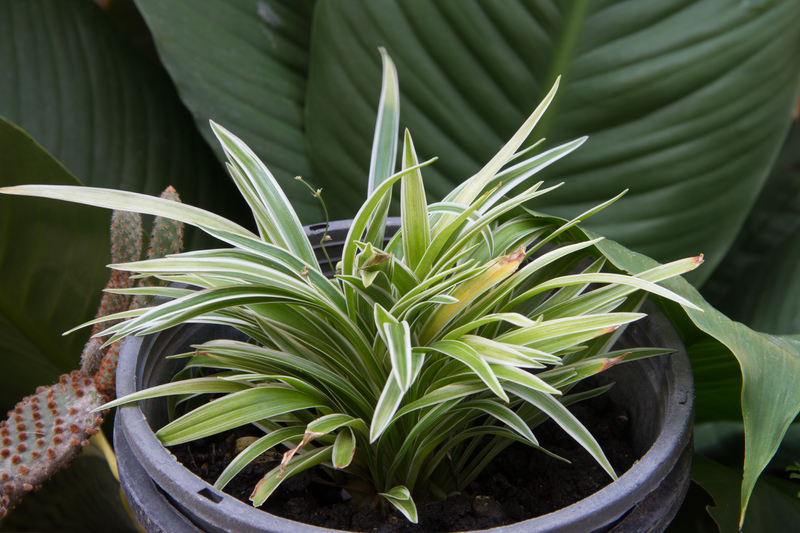Creating Stunning Shapes: A Hedge Trimming Guide
Posted on 06/09/2025
Creating Stunning Shapes: A Hedge Trimming Guide
Transforming your garden into an extraordinary landscape starts with well-shaped hedges. In this comprehensive hedge trimming guide, we'll walk you through the process of creating stunning shapes, maintaining healthy shrub growth, and elevating your outdoor space to new heights.

Why Hedge Shaping Matters
The art of hedge trimming is much more than just routine garden maintenance. It's about sculpting living plants into beautiful, eye-catching forms that enhance curb appeal, define spaces, and create unique garden features. Properly maintained hedges offer privacy, block wind, absorb noise, and can even serve as intricate living sculptures.
The Benefits of Creative Hedge Trimming
- Boosting property value: Beautifully trimmed hedges can significantly increase your home's visual appeal and property value.
- Enhancing biodiversity: Dense, well-maintained hedges provide a safe haven and food source for birds and beneficial insects.
- Expressing creativity: From geometric designs to animal-inspired topiary, sculpting hedges is a rewarding artistic endeavor.
Choosing the Right Plants for Shaped Hedges
Plant selection is crucial for successful hedge shaping. Some species are naturally suited for topiary, while others respond poorly to frequent pruning. When planning to create stunning hedge designs, consider the following factors:
Best Shrubs for Shaping
- Boxwood (Buxus sempervirens): Classic choice; slow-growing and dense foliage perfect for detailed shapes.
- Yew (Taxus baccata): Tolerates heavy pruning; dark green needles hold tight shapes and crisp lines.
- Privet (Ligustrum spp.): Fast-growing and adaptable, excellent for formal hedges and curves.
- Holly (Ilex aquifolium): Evergreen with glossy leaves, often used for creative topiaries.
- Lonicera nitida (Shrubby Honeysuckle): Small leaves and vigorous growth, ideal for intricate forms.
Important Characteristics for Hedge Trimming Success
- Dense branching structure
- Evergreen foliage for year-round appeal
- Response to pruning and quick recovery
- Disease and pest resistance
Essential Tools for Shaping Hedges
Equipping yourself with the right hedge trimming tools is key to achieving crisp, beautiful shapes. The tools you select will depend on the scale and intricacy of your designs. Here are the must-haves for both basic and advanced shaping:
Basic Hedge Trimming Tools
- Hand shears: Precision for small, delicate shapes and finishing touches.
- Electric or cordless hedge trimmer: Fast, even cutting for larger hedges and straight edges.
- Loppers: For removing thicker branches or older growth.
- Pruning saws: Handles mature wood and major structural cuts.
- String line and stakes: Guiding straight lines and symmetrical forms.
Advanced Tools for Topiary Art
- Topiary templates and wire frames: Help in shaping complex forms and animal figures.
- Sharp secateurs: For intricate detail work and smoothing out irregular areas.
- Spirit level or laser line for perfect symmetry
Remember: Sharp, clean tools make a world of difference to your plants and your finished results!
When to Trim Hedges for Best Results
Timing is essential for healthy, flourishing hedges and optimal shape retention. Understanding the right moments to trim ensures vigorous regrowth and less stress on your plants.
Seasonal Guidance for Hedge Trimming
-
Formal Evergreen Hedges:
- First trim: Late spring to early summer (after the threat of frost)
- Second trim (optional): Late summer for sharpness and tidiness
-
Deciduous Hedges:
- Trim in late winter or early spring, before new leaves emerge
- Avoid heavy cutting late in the season to prevent frost damage
-
Topiary Shapes:
- Light follow-up trims throughout the growing season (May to September)
Avoid trimming during extreme heat or drought, and do not prune late in autumn as fresh growth may be vulnerable to cold.
Designing Beautiful Hedge Shapes: Inspiration and Approaches
Unlock unlimited creativity with your garden hedges! Whether you're aiming for classic geometric designs, whimsical spirals, or intricate topiary art, start by planning your vision. Here are the most popular and accessible hedge shapes for home gardeners:
Popular Hedge Shapes to Try
- Rectangular or square: Timeless and formal; ideal for borders, walkways, or privacy screens.
- Rounded or domed: Softens sharp lines, gives a manicured look to foundation plantings.
- Pyramids and cones: Adds a vertical accent, excellent for entrances or focal points.
- Spirals and animals: Creative topiary forms; takes patience but offers unmatched wow factor.
- Layered cloud pruning (Niwaki): Inspired by Japanese gardens for a refined, sculptural appearance.
- Hedge archways and tunnels: Dramatic entrances and garden paths that invite exploration.
Tips for Successful Hedge Shape Design
- Sketch your design or use reference photos to guide your work
- Consider the hedge's growth rate and natural form
- Begin with simple shapes and gradually progress to complex topiary
- Maintain appropriate hedge height for ease of trimming and health
Step-by-Step Hedge Trimming Techniques
Achieving beautifully sculpted hedges requires precision, consistency, and a few trade secrets. Below, we present a detailed method for creating stunning shapes while trimming hedges:
1. Prepare Your Workspace
- Clear away obstacles, garden debris, or old leaves around the hedge base
- Set up stakes and string lines for accurate straight-edge guidance
- Ensure all tools are sharp, clean, and easily accessible
2. Start from the Bottom Up
Always begin trimming from the base of the hedge, gradually working your way upwards. This approach:
- Ensures even access to all areas
- Prevents disturbing lower branches with falling clippings
- Promotes a stable, symmetrical finish
3. Maintain a Taper
For healthy, lush growth, always trim hedges so that the base is wider than the top. This classic technique -- known as batter -- ensures lower foliage receives ample sunlight and minimizes bare patches.
4. Follow Your Outline
- Use your string line as a reference for straight edges
- For curves or topiary figures, step back regularly to assess symmetry
- Trim slowly, taking small snips for better accuracy
5. Step Back and Inspect
- Walk around your hedge from various angles; look for unevenness or missed spots
- Adjust and refine your shape as needed before finalizing
6. Finishing Touches
Clean up any ragged edges with hand shears or secateurs. Remove clippings from the hedge base to prevent disease. Consider feeding and watering after major shaping to support regrowth and plant health.
Hedge Trimming Safety Guidelines
Safety should always come first when using sharp or electric hedge trimmers. Follow these precautions to ensure a safe and successful hedge shaping session:
- Wear safety goggles, gloves, and protective clothing
- Use a sturdy ladder for tall hedges, and never overreach
- Keep children and pets away from the work area
- Inspect electric trimmers for frayed cords or loose parts before use
- Clean and store tools safely after each use
Common Hedge Trimming Mistakes to Avoid
Even the best gardeners can slip up. Be aware of these frequent mistakes to keep your hedges looking their best:
- Over-trimming: Removing too much foliage at once weakens the plant, exposing it to sunburn or disease.
- Flat-sided shapes: Trimming sides at a direct vertical angle can cause bottom dieback due to lack of sunlight.
- Blunt, ragged cuts: Dull tools tear rather than slice, leading to slow healing and vulnerability to pests.
- Ignoring plant type: Not all shrubs tolerate heavy pruning; research your species' needs.
- Neglecting clean-up: Leaving clippings at the base encourages fungal problems.

Maintaining Shaped Hedges Year-Round
Regular care keeps your stunning hedge designs in top condition. Beyond trimming, incorporate these steps for long-term success:
Ongoing Maintenance Checklist
- Water during dry spells: Deep watering encourages strong, drought-tolerant roots.
- Feed annually: Use a slow-release fertilizer in spring to promote healthy new growth.
- Mulch the base: Conserves moisture and suppresses weeds.
- Monitor for pests and diseases: Address trouble early for resilient, robust hedges.
- Regular shaping touch-ups: Lightly trim as needed to keep forms crisp and encourage bushy growth.
Conclusion: Unleash Your Creativity With Stunning Hedge Trimming
Mastering the art of hedge shaping transforms any garden into a vibrant, living masterpiece. With careful planning, the right tools, and regular maintenance, anyone can create beautiful, healthy hedge shapes that become the envy of the neighborhood. Remember, the key to exceptional results lies in patience and practice. Start simple, dream big, and soon your garden will showcase the power of imaginative hedge trimming.
Ready to get started? Choose a shape, grab your tools, and begin your journey to creating stunning shapes in your landscape. Whether you prefer classic lines or whimsical figures, your new hedge trimming skills will make your garden truly unforgettable--and a home for both artistry and biodiversity.

